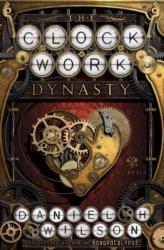
f there's anything Daniel H. Wilson is good at, it's writing about robots. In his latest book, The Clockwork Dynasty, he takes a steampunk approach by setting the book, not in the future, but in the present and distant past. Returning to the origins of robots via the automatons created for the entertainment of the wealthy and royal, Wilson has crafted another workable piece of fiction centered on robots. Unfortunately, as is the case with some of this other writing, I didn't like a few of his stylistic choices.
The Clockwork Dynasty jumps back and forth between flashbacks and "present era" actions, which can sometimes be distracting, especially if one of the storylines is particularly interesting at the time. I almost wonder if there could have been a better way to focus on the action in the present and to reveal the details of the past in more of a "show" instead of the "tell" provided via flashbacks. Additionally, I get why some of the violence was present in this book, but it (along with the few moments of obscenity or sex) seemed a little unnecessary.
One of my other qualms with this book was with the audiobook itself. Since the individuals reading each of the sections were different between the past and the present, it did help to know where I was in the story. However, the male voice of the past was a little quieter than the female voice of the present. This meant I turned up the volume each time the story was in a flashback, only to scramble to turn it down when the timeframe switched. Some volume leveling would have made this book a little less difficult to listen to, is all I'm saying.
A steampunk story by the modern master of robot stories, I give The Clockwork Dynasty 3.0 stars out of 5.
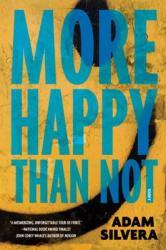
"More Happy Than Not" is a great LGBT youth novel chronicling a single summer of Aaron, a kid growing up in a poor neighborhood in New York. He struggles with his dad's recent suicide, his own attempt to do the same, and his one-bedroom apartment, but he's coping with the help of his lifelong friends and his amazing girlfriend, Genevieve. One day, Aaron meets Thomas, the interesting but directionless kid next door. They quickly grow to be best friends while watching movies on Thomas' roof and scoffing at those who choose procedures with Leteo, the revolutionary brain surgery which buries painful memories for those who can't deal with their past. But as the book goes on, Aaron's relationship with Geneveive and his friends becomes strained and his attitude towards Leteo becomes less scornful. This book is packed with twists and is a great choice for young readers and for fans of "Eternal Sunshine of The Spotless Mind".
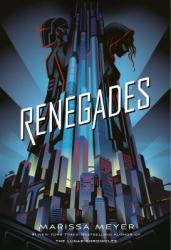
Renegades by Marissa Meyer is an average, but fun book about superheroes. The plot centers around Nova who has to join a team of superheroes to spy on them while secretly being a villain. Since I’ve seen a lot of superhero movies, I thought that this book was pretty cliche. I could figure out every twist before I read about it happening. I also thought that the pacing of this book was weird. Some scenes that were unimportant to the plot seemed to drag on while other important scenes went by way too fast. This might have been intentional, but I don't see the point of it. I thought that this book was average. It was an extremely forgetful book, which was very disappointing because I love some of Marissa Meyer’s previous books. One thing I did like about this book was the depiction of anarchy which is very rare, especially in young adult books. I don't think that this would be a good book to read if you have seen a lot of superhero movies since it uses a lot of cliches from that genre. However, if you are interested in science fiction, I would recommend this book.
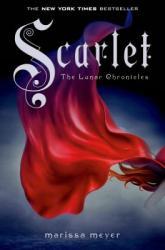
Scarlet by Marissa Meyer is the thrilling sequel to Cinder. Scarlet is a continuation of Cinder’s story while retelling another fairytale, Little Red Riding Hood. Generally, I feel like the sequels are never as good as the original, but that was not the case for this book. Scarlet was definitely my favorite book in the entire series (besides Winter). I fell completely in love with the new characters (especially Scarlet). Marissa Meyer has a talent for creating likable and relatable characters. She also has a talent for describing the setting. Cinder took place in Beijing while Scarlet took place in France. Meyer illustrated France just as vividly as she illustrated Beijing. I would recommend this book to anyone who enjoys science fiction or anyone who enjoyed Cinder.
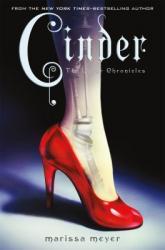
Cinder by Marissa Meyer is a fast-paced and action-packed book that you can't put down. The book is a futuristic and dystopian retelling of the classic fairytale, Cinderella. This is definitely one of my favorite books. You won't find another science fiction book with as many interesting and diverse female characters. The book has a very exciting plot that kept me on the edge of my seat. In addition to that, Cinder has many amazing characters. I couldn't pick my favorite one. All of the characters are lovable and distinct. Another aspect of the book that I enjoyed was the setting. I loved Meyer’s vision of what the future would look like. She described the setting perfectly. I would recommend this book to anyone who is interested in science fiction or fantasy genres.
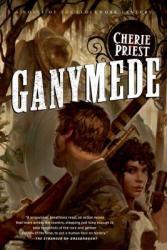
Now that I’ve read the first three books in the Clockwork Century series, any hope I had of some cohesive narrative is essentially gone. While following a new character for each book helps to provide a different setting of the steampunk alternate universe, when I know these characters won’t matter outside their own books, I kind of stop caring about them. Even previous heroines are relegated to cameo and minor character status as the persistent series of somewhat pointless events drags on. And don’t even get me started on the zombies, which are a distraction to any actual story in my opinion.
I think the main problem I have with these books is the fact that things happen without much lead-up or foreshadowing. Sure, there are some fascinating factors involved with making a submarine work in the Civil War era, but the resulting battle and conclusion went exactly as I expected them to. This isn’t foreshadowing as much as it is conforming to clichés. There doesn’t seem to be much at stake in any of the character arcs, which is made all the more prevalent by the relatively uninteresting characters themselves. Some have distinguishable quirks, but they all feel flat in a world that could be that much more interesting.
As for the “twist” near the end involving one of the characters, I feel it was poorly executed, let alone unnecessary. Considering the medical techniques at the time, even in an alternate universe, the individual in question probably didn’t have the necessary “assets” to convincingly pull this deception off. If anything, it was only hidden via clothing, but since there were no hints or foreshadowing about this surprisingly minor character, I had no way to even know if anything was off to begin with. I can believe that some of them might exist in that timeframe, but it just felt like a cheap add-in for the sake of “inclusion.”
Another steampunk book in a series that isn’t going anywhere, I give Ganymede 2.5 stars out of 5.
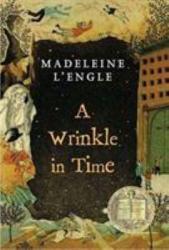
Meg Murry is an outcast. She feels that she doesn't belong anywhere -- not at school, and especially not among her family of accomplished scientists and visionaries. But, when three strange women appear and offer to help her find her missing father, she is whisked away to another world. With the help of her brother Charles Wallace and their friend Calvin, she works to find her father and save Earth from impeding evil. I originally read "A Wrinkle in Time" back in middle school, but decided to reread it before seeing the film, and found that I loved the book just as much as I did the first time around. The writing is charming and clever. The worlds are vast and imaginative. Meg and her brother Charles Wallace undergo compelling character arcs and discover their true purpose along the journey. I have nothing negative to say about this amazing story. To anyone who loves fantasy, sci-fi, adventure, rich characters, and interesting plots, go read this book!
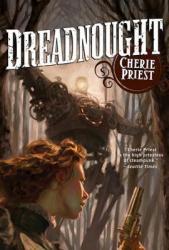
For the most part, the book series I have read progress the story from one book to another. I get that there are some series with the same character in different predicaments for each book, but jumping from one character to another in each different book is an interesting tactic. Of course, I’m somewhat guilty of this, as The Fluxion Trilogy focuses on different characters for each book. As far as I can tell, The Clockwork Century series also does this, even if the connections between the characters are flimsy at best. Even so, the plot seemed to take a step backward from Boneshaker to Dreadnought.
One of my qualms with Boneshaker was that there wasn’t a lot of world-building that established what this alternate-reality Seattle was like in the scheme of the broader United States. Dreadnought solves this problem by giving the main character an opportunity to travel across the country, thus establishing some of the world-building in the process. In fact, there were a few points where I wondered if I had picked up the first book in the series, only to confirm that Dreadnought was the second book. Unfortunately, I thought the plot of Boneshaker was a little more believable since the cross-country trek in Dreadnought seemed like an obvious ploy by the author to introduce the world to the reader.
I certainly appreciated the thinking that went into the consequences of a decades-long Civil War, but I still think the “zombie” angle of this series seems out of place. I get that steampunk is the combination of some more modern technologies in a Victorian era, but the zombie genre seems so modern that combining the two never really gelled for me. Plus, through the plots of two books, I feel like I’m no closer to understanding where the gas that creates the zombies originates, or if there’s even an endgame to the zombie situation.
A book that should have come first in the series, I give Dreadnought 3.5 stars out of 5.
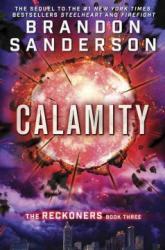
In the final book of the steel heart series, David learns who the true enemy and leader of calamity is. A book with love, mystery, and action any teenager would love this book.
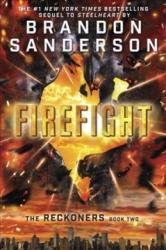
In the sequel to steel heart fire fight counties to adventures of young teen David. This book is a great drama, romance, and action book. Will David survive to war against epics or will he love one instead. Firefight is my personal favorite book from the series.
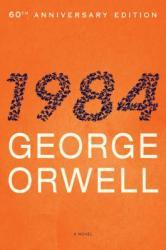
Although the year 1984 has long since passed, the reality created in Orwell’s novel 1984 contain aspects that our society is beginning to show. 1984 follows a society where the world is ruled by 3 superstates: Oceania, Eastasia, and Eurasia, each of which have a totalitarian english socialism government. The government of Oceania has surveillance on every citizen through monitors called telescreens that enable them to hear and see what every person is doing and every citizen is required to have a telescreen in
their homes. This enables them to see if the citizens are committing “thoughtcrime” and if they are, the thought police kidnap the person and erase them from existence. Winston Smith is our main character with a quiet rebellion against the totalitarian government of Oceania. He believes that he is an individual and should be allowed to have his own freedom. As Winston tries to avoid being erased from existence and maintain a romance with the love of his life Julia, the government slowly closes in on his treason. This is one of my favorite novels and a masterpiece by Orwell as it shows how a society with a controlling government creates fear and false order for the citizens. Aspects within the novel are present in our own government today, so who is to Orwell’s predictions aren’t slowly but truly becoming a reality.
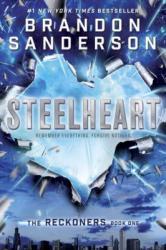
Steelheart is the first book in the series. A group of rebels called Reckoners must fight back against super humans who gained their powers from the mysterious planet calamity. David, the main character, spends his life researching the special beast. He joins the Reckoners and decides to put his special knowledge to use. In this all new series written from Brandon Sanderson you can experience love, mystery, and passion.
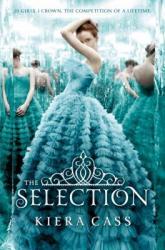
This book is amazing! It's kind of like a twist on the show The Bachelor. The Selection would be best for teens due to some mature parts. The main character is relatable and is an awesome person to follow through the story. Romance is the main part of the story so if your a fan of romance then this would be a great book to read. I loved this book and would recommend it to teens who love romantic novels and a great story.
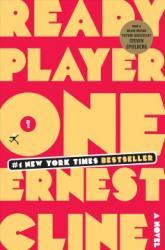
I don’t know where to start with this review because there are a lot of different elements of the novel to discuss. The reason why I rate Ready Player One four out of five stars instead of five out of five is the overwhelming amount of 80's references mentioned in literally every line that honestly only further bored the audience. The references to Star Wars, Indiana Jones, Back to the Future, Dungeons & Dragons and more were tolerable because they were iconic - something an individual born 20 years later still understands. Then, Cline writes paragraphs on Atari consoles and Black Tiger or Joust games which just isn’t relate-able for the majority of the audience the novel is targeting (which is why I assume the director replaced the Joust scene with a car race in the movie). But the dominant issue with Cline’s writing is not even necessarily the amount of references but the fact that he explains every single one. At some points, I thought about how I might’ve read a Wikipedia article for the same informational effect. There are plenty of plot twists to contribute to a surprising manner regarding both the characters and the video game - I was never bored with the plot. Ready Player One is one of the many futuristic dystopian sci-fi novels everyone in this generation reads - which is why the 80's references bothered me. I don’t think this is the type of novel most adults born in the 60's or 70's are going to read, yet Cline tries to appeal to them anyway.
Reviewer Grade: 11
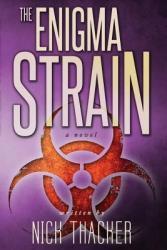
The basic formula for a thriller is as follows: one loner, one love-interest, and lots of running. The Enigma Strain is your cookie-cutter thriller, which isn’t necessarily a bad thing. The premise is somewhat entertaining, if not downright ridiculous and unrealistic. The pacing is certainly fast enough to keep the characters moving and racing against the clock of destruction (at times even literally). In the end, there were no surprises as the day is saved and the loner opens up enough to attract the love interest. The fact that the ending was predictable just meant that it delivered on the thriller formula.
One of the weaknesses of The Enigma Strain is the sense of space and time. There was plenty of driving around to different locations, which made them seem like they were quite close together. However, the love-interest kept talking about flying, which made me wonder how far away these places were. If it took a long time to drive between them, there was a lot of time these two characters were in the car together that wasn’t necessarily alluded to. I know I can get irritable after a long time in the car, and the fact these two strangers weren’t at each other’s throats after a collective eight hours (or more) of driving felt strange.
While The Enigma Strain had all the trappings and accouterments of a standard thriller, it also contained many of the “wait, why?” faults that separate a lot of thrillers from actual reality. Some of these questions were answered (like why the main character is a loner), but others were frequently touched upon but never fully explained (like why the main character is afraid of flying). In the end, if you want a fun escape from reality, a good thriller like The Enigma Strain can probably fit that bill.
A standard thriller that follows the thriller formula, I give The Enigma Strain 3.0 stars out of 5.
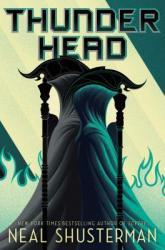
Hey y’all. It’s been a while since my last book review, so I’m going to talk to you for a minute about Neal Shusterman’s Thunderhead. Minor spoilers for Scythe will likely occur throughout, given that this is book #2 in trilogy.
Thunderhead is set in a future world of plenty, where death and poverty and illness and war have been eliminated by the Thunderhead, an artificial intelligence developed from what we currently call “the cloud.” Every human has nanites in their blood that reduce pain from any injury, and slowly repair any damage. And if by some unfortunate accident, you happen to die, a drone will recover your body and take you to the nearest facility where you can be revived (your first one’s free!).
However, in order to curb overpopulation, the Thunderhead allows for the Scythes. Scythes are an order of highly skilled assassins (of sorts) who exist to keep humanity’s numbers in check. They maintain a quota of gleanings, permanent deaths for a chosen few to remind people of the mortality that the entire race once faced. Anyone who is gleaned by a Scythe earns immunity for their family for a year.
Book one in the series, Scythe, follows Rowan and Citra, two young teens who are chosen as apprentices to Scythe Faraday, who intends for one of them to become his successor. Their training leads to the widening of schisms within the Scythedom, and soon they find themselves pitted against each other over the right and wrong ways to go about their duties of gleaning.
Thunderhead picks up several months after the events of Scythe, with Citra now serving as Scythe Anastasia, and Rowan operating in the shadows, gleaning other Scythes who he deems to be immoral and corrupt. Dubbed Scythe Lucifer, he lives a life on the run while Anastasia is honored for her rather benevolent take on gleaning (giving her victims a month’s warning, and allowing them to choose the means by which they will die).
This book introduces more perspectives from the Thunderhead itself, giving the reader powerful insight into the all-powerful AI’s thoughts and concerns. We also meet Greyson Tolliver, a young man who has devoted his entire life to serving the Thunderhead, and has his loyalty tested to the extreme. While this can feel like it’s drawing attention away from Rowan and Citra, it contributes to the worldbuilding. And while Scythe had a phenomenal dystopian feeling, there were many questions left unanswered that are picked up in these chapters and monologues.
Now Anastasia and her current mentor, Scythe Curie, have been targeted by a mysterious attacker who seems intent on ending them both permanently, while Rowan grapples with the consequences of his actions as Scythe Lucifer. The Thunderhead muses on the Separation of Scythe and State, lamenting its decision to refrain from interfering with the actions taken by members of the Scythedom, finding clever ways to work around the various safeguards that it has installed in society (and maybe finding out more than it was ever meant to know).
All in all, Thunderhead is a powerful followup to Scythe, a worthy companion and, to my simultaneous joy and rage, the second book in a trilogy. Book three is due in 2019, and I can’t wait to see how this all wraps up.
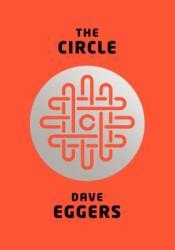
When I saw the movie adaptation of this book, I felt like the presentation of this somewhat interesting idea was already dated by about five years. This made me curious if the book was any better. As is probably no surprise to anyone, the book was much better. Sure, the movie cut a few things from the book that I thought were a bit too unnecessary (all the “sex,” that is) or underutilized (the “Calvin” character), but the book really hits at the intensity of the internet-addicted generation. I would even go so far as to say The Circle is the modern version of 1984 .
I’m somewhat torn when it comes to the message presented here. I understand how trying to stay on top of millions of e-mails, and thousands of social media updates can be utterly overwhelming. I also agree that a lot of ideas that seem to be beneficial to society will have the removal of personal privacy as an adverse side effect. However, the vehemence that people participate in the world does bring up a good point about apathy. Granted, I don’t think we should be nearly as extreme in our “oversharing” on social media, but if the majority of success is just showing up, then why do so many people find themselves too busy to even participate? Do they not want to engage with their fellow humans?
I did appreciate how the transition from utopia to dystopia went almost entirely unchecked. The main character’s journey really helped to show how the addicting nature of online interactions and instant feedback can get out of hand. From documenting our lives to searching for information to even searching for love (of which internet dating wasn’t included in the movie), the internet is a powerful place. If anything The Circle highlights how dangerous a true democracy can really be, particularly if the minority opinions are known at each decision point.
A terrifying look into our digital mirror, I give The Circle 4.5 stars out of 5.
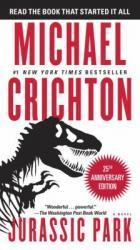
One of the most classic science fiction novels ever written, Jurassic Park is a tense, action filled, and groundbreaking book that won't let you go! The novel takes place on a tropical island, where a man has invented a technique to extract dinosaur DNA from mosquitoes, and is then able to breed living dinosaurs. However, something goes terribly wrong, and the characters then have to escape the island with giant dinosaurs after them. The novel is incredible, and it displays the dinosaurs perfectly. The characters are all fleshed out and seem like real people, and the couple sub-plots are exciting and do not seem tedious at all. I would recommend this book to anyone looking for an action story, a sci-fi novel, or a good book in general.
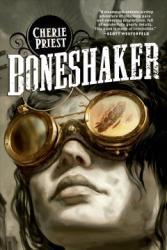
I suppose when I chose to read this book, it would have been a little more steampunk than it was. Sure, Boneshaker has some of the trappings of a steampunk story, like the Civil War and inventions comprised of brass; but in the end, it felt more like light window dressing than something important to the plot. Surprisingly enough, this book was more along the lines of a zombie apocalypse novel than a steampunk one. In that sense, I’m disappointed that the cover didn’t completely deliver on its premise and instead decided to rely on the tropes of the post-apocalyptic genre.
The characters themselves were somewhat interesting, but their motivations seemed a little flat. The boy who wants to find his father and the mother who chases after him aren’t that compelling. In fact, the journey of both characters could have probably been accomplished via one of them, with supporting characters providing information about the other one. If anything, the plot was only used as a method to explore this semi-steampunk Seattle. This meant that, by the end of the book, there were quite a few more questions I had than answers. I guess that’s why there are two more books in this series.
I think my main problem with this book is that it isn’t more thoroughly tied to real history and real locations. Sure, there were a few mentions of the Civil War, but if you removed those few links to history, the story stands on its own pretty well. In fact, you could probably set this anywhere, even in its own, unique world, and it should still work. Because it doesn’t rely on our knowledge of history and familiar places, it doesn’t feel like the “alternate history” that steampunk can provide. In the end, this was a pretty good idea, but it’s misleading in its marketing.
A post-apocalyptic zombie book that has hints of steampunk thrown in, I give Boneshaker 3.0 stars out of 5.
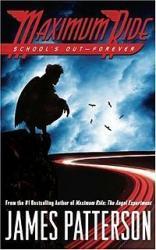
Where the story was left off in volume 1, Max and the flock finally escape the lab. Angel informs them of their parents, and another lab in New York where they can find more information. They work their way there, constantly running into erasers, and struggles along the way. Even when they make it there, they must survive the busy streets as it becomes a scavenger hunt, for the mysteries along the way.


